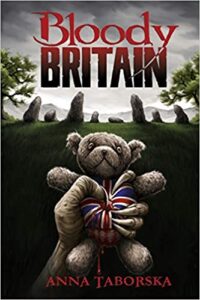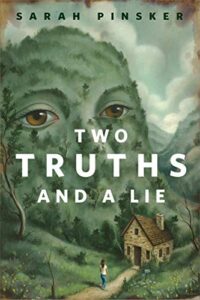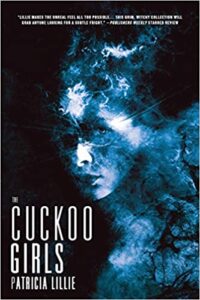Bloody Britain by Anna Taborska, illustrated by Reggie Oliver
Shadow Publishing, 2020
ISBN 978-0957296299
Available: Paperback ( Bookshop.org )
The legends and lore of ancient Britain are an essential part of its history, and in Bloody Britain, Anna Taborska shows us that its dark past is never really dead. In a disturbingly calm, conversational tone, Taborska reports the details of torture, murder, revenge, and punishment that evolve from familiar stories and settings into new short story plots with a contemporary feel.
Some of the best stories in this collection find horror in the midst of everyday encounters while their innocuous titles belie the violence to come. Who would expect the nice man collecting money for a cancer charity in “Teatime” to be a serial killer who revels in making people suffer their greatest fears? What would make anyone think that a giant worm would be waiting for an opportunity to pop out of a church crypt like the monster in “Cyril’s Mission” does?
Two of the most inventive tales, “Rockstar” and “Daylight Robbery,” also give us something deeper to think about as we ponder the characters’ behavior. When the singer in “Rockstar” secretly pays an anonymous writer for lyrics that end up describing real murders, it calls to mind the bad choices some people make for fame and profit. “Daylight Robbery” also focuses on status. It paints the picture of a futuristic, divided society, one in which designer babies become privileged adults who drive around in electric cars wearing “smart suits” while poor immigrants are literally blind and persecuted as terrorists.
There are also traditional ghost stories in Bloody Britain. The ghosts include a woman who died in a meat packing factory (“The Haggis Queen”), a young wife and her servant, falsely accused of being her lover, who were both murdered by her husband (“The Gatehouse”), and even ghost dogs that roam around a pet cemetery (“A Walk in the Park”).
Although the events are rather predictable in a few of these short stories, they are still entertaining due to Taborska’s writing style and skillful use of dialogue and description. For example, in “Night of the Crone,” a gang of degenerates gets what’s coming to them when they disturb a monolith in a stone circle. There is also a man who gets into trouble when he dares to inspect a shipwreck at “Formby Point,” and an innocent person imprisoned in the Tower of London who has an encounter with the ghost of Lady Jane Grey. In “The Cat Sitter,” a woman is targeted by a witch who haunts the woods nearby, and in “The Lemmy/Trump Test,” people of low social status are killed for sport. Even the curious student in “Out of the Light” can’t avoid disaster when he becomes addicted to reading a fascinating, evil book he’s borrowed from the bowels of the Bodleian Library.
So, light the fire, lock the door, and curl up with a diverting story and a nice cuppa. Recommended.
Reviewed by Nova Hadley
Editor’s note: Bloody Britain is a nominee on the final ballot of this year’s Bram Stoker Awards in the category of Superior Achievement in a Fiction Collection.







Follow Us!